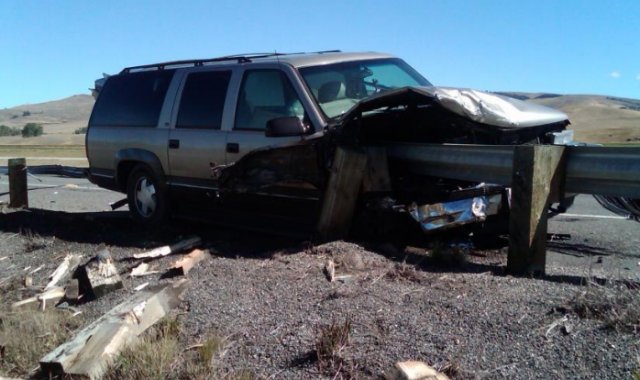Update: Twitter rumours are now that the CBA will be extended for another week to allow further negotiations. New deadline is Friday March 11 at 5pm Eastern time.
March 4, 2011
“Secret space warplane” to launch on secret mission with secret payload
Anything that gets Iran’s leadership all worked up into a panic can’t be all bad:
The US Air Force is set to launch its second X-37B miniature unmanned spaceplane — the type famously dubbed a “secret space warplane” by the Iranian government — on Friday.
[. . .]
Once in orbit the X-37B deploys a solar panel array, unlike its bigger cousin the Space Shuttle which uses fuel cells for electrical power. Thus the little robot spaceplane can remain in orbit for much longer periods unsupported before re-entering the atmosphere to make a runway landing. The previous OTV-1 mission, carrying a payload which remains secret, lasted 224 days and ended with a successful landing at the Vandenberg military space base in California.
As yet the USAF has not revealed the planned duration of the OTV-2 mission launching tomorrow, and again details of the payload are not being revealed.
There has been extensive speculation among space watchers regarding just why the USA needs a small robotic spaceplane. For most purposes a more normal spacecraft, unburdened by heat shields for re-entry, would be more economical. Even supposing a need to return to Earth, there would seem to be no need for the X-37B’s Shuttle-style delta wings, which add weight unnecessarily — a capsule design could be used, or a lifting body if runway landing was regarded as essential.
Can you upgrade from Windows 1 to Windows 7?
I doubt very many of you ever used Windows 1.0 (I certainly didn’t: 3.0 was the first time I used Windows). Charles Arthur writes about an interesting experiment conducted by Andrew Tait to test how well your system would work if you somehow needed to upgrade through all the major Windows versions:
The question is: how robust is it? Can you really do all that updating? You have to start with MS-DOS 5.0, of course, because early versions of Windows needed that.
It’s a bit hairy and config.sys-y in the early versions up to 3.1.
But what’s really impressive is that Doom 2 and Monkey Island — installed right at the beginning — work all the way through, right up to Windows 7. Well, apart from in Windows 2000, where it hung at the start (lack of DOS support).
Well done Andrew Tait, alias Rasteri, the YouTube/Reddit user who had the enormous patience to do all this. Especially for sounding like Sean Connery all the way through. “It is indeed possible to upgrade through every version of Windows… and have some settings remain. This is nearly 20 years of application compatibility and Microsoft should be applauded.”
Of course, the real stumbling block to doing this would be the hardware: nothing that was available in the Windows 1.0 era would be able to run the far more demanding software of the Windows NT family of operating systems. To get around that, Tait used VMWare’s virtualization software:
Don’t text and drive
A few images sent along by Dave Carr:

Looks like the guardrail did its job here, keeping the SUV out of the ditch, right? Well, not quite the way the traffic engineer thought it would:
Israel’s largest defence company moving toward privatization
Israel Aerospace Industries (IAI) is a state-owned company with a great reputation for quality and innovation. The Economist looks at their moves toward going into private control:
When Mr Shamir, an important figure in Israel’s booming high-technology business, took on the job of sorting out his country’s biggest industrial company in 2005, state-owned IAI was in a wretched condition.
For one thing, it had never quite got over the blow to its self-confidence when the Lavi, an advanced dual-role combat aircraft, was cancelled by the government headed by Mr Shamir senior in 1987. Although the Lavi was on course to meet all its performance targets, the cost of the project and American concern that it was helping to finance a rival to its F-16 and F-18 fighters killed it. For IAI, it meant that it would never again try to make a fast jet on its own.
For another, despite recovering much of its technological élan, IAI was an organisational and financial mess. Executives say it had gone three years without a formal chairman and two years without a signed financial statement. Banks had seized some of its financial assets and its chief executive of 20 years, Moshe Keret, was facing bribery allegations (he denied these and the case was dropped for lack of evidence). The firm was also in the grip of the Histadrut union federation, which fought all attempts to slim a bloated workforce and introduce merit-based remuneration.



